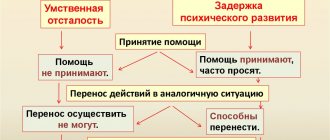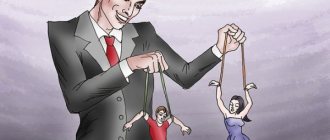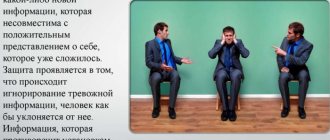Music therapy is a branch of art therapy that is accessible to almost anyone. Many of us unconsciously use this technology in everyday life: listening to music while driving, humming our favorite tunes at home, playing audio recordings to lift our spirits.
Music therapy as a method of psychological correction is used all over the world. In this article I will talk about how music therapy sessions are conducted and what psychological problems can be solved through music.
What is music therapy
Music therapy is a treatment that involves listening to certain compositions.
This happens individually or as a group of people. Music can be played in the background in combination with several other corrective techniques that increase the effectiveness of the impact. The method is used to eliminate various emotional deviations and to correct certain fears. The positive effect of music in the treatment of some serious diseases has been noticed.
Music therapy has been known for several centuries. Even in the times of Pythagoras, Plato and Aristotle, the healing effects of music were mentioned. Avicenna, a famous doctor, used music in the treatment of diseases of the nervous system. In the modern world, the first serious mentions of the use of music therapy date back to the 19th century, when the French doctor Esquirol began to introduce listening to music in psychiatric hospitals. Then the doctor relied only on his own intuition, but later the therapy received significant scientific justification. Currently, it is actively used in psychiatry and other fields.
Diseases in the treatment of which psychotherapy is often used: neurasthenia, neuroses, insomnia, psychosis and schizophrenia. Positive aspects have also been noticed in the treatment of heart disease, ulcers, bronchitis, problems of the genitourinary system, and gastritis. This is especially useful information for patients who are allergic to essential medications.
Music therapy, unlike most other treatment methods, allows for self-medication. There are even special collections, combined into separate collections, that promote the treatment of certain ailments. Music therapy cannot completely replace necessary treatment, but it can reduce the dose of medications taken and achieve pain relief.
Definition of the concept
What is music therapy? From the point of view of practical psychology, music therapy is specially organized correctional classes, where musical instruments, audio recordings, and singing are used as the main method of therapy. Our body adapts to the environment, reacts to sounds with tension or relaxation. Changes in the body lead to changes in the emotional state.
Psychotherapists use music therapy to solve problems of rehabilitation of patients after treatment, depression, neuroses, psychoses, and insomnia.
Music in medicine is used as an auxiliary method in the treatment of tachycardia, hypertension, tuberculosis and somatic diseases. This technique allows you to reduce the dosage of medications and has an anesthetic effect.
Music therapy techniques are an excellent tool for restoring mental balance and activating creative potential.
History of origin
Sound therapy appeared in ancient times. Thus, Avicenna, Aristotle, Plato and Pythagoras knew about the healing properties of various melodies of the flute and lyre.
In Ancient Greece, choral singing was considered an effective remedy for insomnia, and the sounds of the clarinet and harp helped treat infertility.
In the 12th century, M. Heratsi used music in the treatment of mentally ill people. He claimed that musical rhythms eased their suffering.
Music therapy began to be used as a means of mental correction in the 19th century in France. The founder of this treatment method is considered to be the psychiatrist Esquirol.
In esotericism, throat singing is considered a method of purifying consciousness. Vocalizations help optimize the functioning of all organs and systems of the body.
At the beginning of the 20th century I.M. Sechenov and V.M. Bekhterev was able to experimentally prove the positive effect of music on blood circulation, breathing and the nervous system. The discovery of scientists led to the fact that since 1918, lectures on music therapy began to be given to psychology students as an experimental course at Columbia University. This discipline became the first scientific course in art therapy.
Later, on the initiative of V.I. Petrushin in Moscow, courses on musical-rational psychotherapy were organized. In his innovative lesson program, the professor combined meditation, dance and music.
The first Music Therapy Center was opened in England in 1975. Since the 21st century, similar centers and associations of practicing music therapists have begun to open in different countries. Thus, the largest associations of the musical direction of art therapy are now:
- music therapy forum in Switzerland;
- Society for Music Therapy in Austria;
- active community of music therapists in Germany.
In 2010, this area of art therapy was recognized as an effective restorative and pedagogical method of psychotherapy.
The purpose of music therapy
Some genres of music have a calming effect, give a relaxing and calming effect - this has long been beyond doubt. In addition, the melody used in music therapy affects the overall mood. This does not depend on the listener's abilities, and happens on its own.
In general, a course of correction using such therapy may include the following goals:
- Emotional release.
- Regulation of emotional state.
- Dealing with personal troubles.
- Reducing stress levels.
It is also believed that some compositions can help in the fight against certain physical ailments.
Music therapy is a psychotherapeutic method used to restore, maintain and promote mental and physical health [1]. This method occupies a particularly important place in the non-drug treatment of chronic somatic diseases and diseases of the nervous system.
Currently, music therapy is developing as an integrative discipline at the intersection of neurophysiology, reflexology, psychology, and musicology. In European countries, particularly in Germany, the theoretical aspect of music therapy is being actively studied, while in the USA this method is developing more in a practical aspect [2]. Domestic scientists also made a certain contribution to the development of music therapy. Let us recall that at the turn of the 19th—20th centuries, in the studies of V.M. Bekhtereva, I.M. Dogelya, I.R. Tarkhanov presented data on the beneficial effects of music on the central nervous system and the function of other body systems.
Great importance is attached to the impact of music on the human psyche. It is assumed that under the influence of music therapy, the patient should acquire the opportunity to function more freely and effectively in the world around him, as well as achieve greater mental and physical stability [3].
When realizing the described effect, a qualified music therapist solves therapeutic problems together with the attending physician with the participation of the patient. Music therapy in this case is both part of the psychotherapeutic process and an independent method.
Music therapy is divided into three main forms: receptive, active, integrative [4].
Receptive (passive) music therapy. During this form of therapy, the patient does not actively participate in the process of the music therapy session, taking the position of a listener. Depending on the stage of treatment or the mental state of the patient, he is offered to listen to certain musical compositions, harmonies, sounds [1]. There are three types of receptive music therapy: communicative (joint listening to music aimed at maintaining mutual contacts, understanding and trust); reactive (aimed at achieving catharsis); regulatory (helps reduce neuropsychic tension).
Active music therapy is based on the patient’s active musical activity: reproduction, fantasy, improvisation. For this, both various instruments and the human voice can be used. It is known that singing is effective in the treatment of speech disorders, including controlling the patient’s breathing and rhythm of speech, improving articulation [5], while playing music on instruments, including playing in an ensemble, is used to restore coordination of movements.
Integrative music therapy combines music with other art forms. Patients are encouraged to create poems and stories after listening to music; pantomime, plastic dramatization to music, musically active games; drawing and modeling, sand therapy with music [6].
The following main directions of the therapeutic effect of music therapy are distinguished: 1. Regulatory influence on psycho-vegetative processes; 2. Development of interpersonal communication skills (communication functions and abilities); 3. Emotional activation during verbal psychotherapy; 4. Increasing aesthetic needs.
The physiological effect of music on the human body is justified by the fact that the nervous system, and with it the muscles, are able to assimilate rhythm. Music as a rhythmic stimulus stimulates the physiological processes of the body, occurring rhythmically in both the motor and autonomic spheres. The rhythms of individual human organs are always proportional. Rhythmic movements represent a single functional system, a motor stereotype. According to research data, individual elements of music (rhythm, tonality) are capable of inducing states that are adequate to the nature of the stimulus: minor keys have a depressive effect; fast pulsating rhythms have a stimulating effect and cause negative emotions; soft rhythms and consonances soothe; dissonances excite [3].
Many sources note that music can be used to correct personal development, including the regulation of psychosomatic and psycho-emotional processes [7].
The psychological mechanisms of the beneficial effects of music therapy are: relaxation, catharsis (emotional release, regulation of the emotional state, getting rid of oppressive feelings), facilitating awareness of one’s own experiences, confrontation with life problems, increasing social activity, acquiring new means of emotional expression, facilitating the formation of new relationships and attitudes. . The sedative (relaxation) function is achieved through specially organized musical activity, thereby relieving muscle and emotional tension and restoring physical and emotional strength. To achieve a stimulating function, major rhythmic dance music is used, which results in the mobilization and activation of a person’s physical and emotional capabilities [8].
Group forms of music therapy have become widespread. Most often in therapeutic practice, receptive music therapy is used with a focus on communicative tasks. During the lesson, the group listens to specially selected pieces of music, after which they discuss their own experiences, memories, fantasies that arose during the listening. Musical programs are developed on the principle of gradually changing the mood, dynamics and tempo of compositions, taking into account their different emotional load. An active version of music therapy is also used in group work. It is a therapeutically oriented, active musical activity, during which therapy participants can play various musical instruments (enter into a musical dialogue with each other, play out certain situations and topics) or sing in chorus [1, 2].
The types of music therapy listed above have no age restrictions and do not depend on musical abilities. They can be used in the correction of emotional disorders, complications associated with age-related development, including when working to overcome behavioral problems in children with mental or physical disabilities [5]. For example, many foreign rehabilitation programs provide programs aimed at the rehabilitation of children with early childhood autism (ECA) [9–12]. Cases of the use of music therapy as a means of pedagogical regulation of the emotional state of children are also described - both primary schoolchildren with developmental problems and adolescents with deviant behavior [10].
Literature data [13] also indicate that the use of music therapy contributes to positive dynamics in the treatment and rehabilitation of adults with acute and chronic neurological diseases, including demyelinating ones [13].
In one of the first large studies on the topic, published in 1989, the authors evaluated the effectiveness of group music therapy for multiple sclerosis (MS) over a 2-year period in 225 patients who participated in group music therapy for 4-6 weeks [ 14]. The main topics of the group courses were problems associated with MS, such as disability, uncertainty, anxiety, depression, low self-esteem, etc. The data obtained during the study indicate that group music therapy can be used not only as a method of psychological support, but also as an independent strategy for overcoming stress and everyday problems caused by the underlying disease. Another study [15] assessed the effect of music therapy on respiratory muscle strength in severely ill MS patients at risk of developing pneumonia due to respiratory weakness. The results of observation of 20 patients are discussed (10 patients in the active group, 10 in the control group). An increase in respiratory muscle strength was noted in 8 out of 10 patients in the active group, although no statistically significant difference from the comparison group was obtained due to the small number of observations [15].
Another study conducted in Germany examined the effectiveness of active music therapy in the treatment of MS in terms of its effect on depression and anxiety, changes in self-esteem and quality of life scales, as well as cognitive and functional parameters. The results of observation of 20 MS patients aged from 29 to 47 years were included (10 patients in the active group who received 3 blocks of music therapy for 1 year of 8-10 sessions, 10 patients made up the control group). Indicators of neuropsychological testing were assessed before and 3 months after the course. Over time, in the active group receiving music therapy, the authors observed significant improvements in self-esteem, depression and anxiety [16].
A review published in 2006 [17] summarized the results of 7 controlled studies published at that time on the use of music therapy for MS. The authors noted that all studies at that time were preliminary, pilot in nature. However, the results of all studies clearly indicate a decrease in depression and anxiety. The greatest benefits of music therapy in psychosocial and emotional terms have been noted specifically in the complex management of patients with MS.
A number of controlled studies have been conducted on the use of music therapy in patients with MS. A series of studies [18, 19] were conducted in the USA on the influence of music therapy as a mnemonic technique on the cognitive functions of patients with R.S. The first study showed that musical mnemonics could facilitate patient learning [18]. Another study compared the effects of memorization in 38 patients, with 20 of them remembering using music and 18 using only speech. Correlation analysis showed that in patients with MS, musical memory support was more effective than speech support [19]. One of the latest studies [20] examined the musical identity of patients with MS to assess the psychological state of the patients. The authors describe the method of “musical autobiography,” which is an effective therapeutic tool through which patients describe themselves. The use of this technique helps in restoring self-identity and improves the quality of life of patients with R.S. Eight adult patients were interviewed after selecting 10–15 pieces of music that were most meaningful to them. It was found that the musical preferences of patients are characterized by personal, social, temporal and interpersonal characteristics. It has also been shown [21] that reminding MS patients of musical history improves their well-being and awareness, and also provides an alternative way of self-expression, activating and improving affective memory and promoting a sense of wholeness.
In practice, it has been proven that music therapy can help relieve pain and reduce the patient’s nervous tension. Thus, a study by Austrian scientists [22] shows that the use of music therapy in combination with relaxation exercises effectively influences the healing process. Patients (65 people aged 21 to 68 years) suffering from chronic pain after surgery listened to certain music for 25 minutes a day for 3 weeks. At the end of the study, patients noted improved sleep and decreased pain.
Listening to music is known to relieve tension, which can help relieve pain. One of the latest studies [23], conducted by authors from Germany and the UK, examined the effect of music therapy on the condition of women with fibromyalgia syndrome. The study involved 30 women with an average age of 50 years. The subjects listened to certain music 5 times a day for 2 weeks. The results of the study confirmed that listening to music for the purpose of activation or relaxation increases control over the perception of pain. The authors argue that to achieve a greater effect, not only passive listening to music is necessary, but also playing music and choral singing [23].
Music therapy techniques are quite diverse and can be included in various programs that involve the use of music not only in complex therapy, but also separately as the main and leading factor of influence (listening to musical works, individual and group music playing).
Music therapy as a method of personality psychocorrection
Musical compositions have a direct impact on various systems of human organs, affecting the depth of breathing, the speed of activity of neural pathways, heart contractions, muscle relaxation or tension. Thanks to the effects of therapy, changes occur in the emotional state. Example: an anxious person begins to calm down. It has been observed that the heart rate decreases with the help of certain medications and listening to music.
Music therapy is a good helper for neuroses and the regulation of psycho-vegetative reactions. Certain compositions lead to the normalization of the emotional background, help to develop new communication skills, promote socialization, the formation of new strategies and life guidelines.
Music treatment corrects a wide range of mental conditions, but in case of serious disorders, it becomes an auxiliary function. At certain stages, therapy is not recommended at all. Patients experiencing acute psychotic states can only complicate their situation. Reason: music will make them immerse themselves in their images, fantasies, which will worsen the situation. Before leaving the acute phase, the patient’s main goal is to establish a connection with reality. When a stable state is established, then it is permissible to begin working on the emotional component.
Music treatment is not recommended for epileptics. Musical waves affect brain activity and, when resonated, can cause a seizure.
Therapy is ideal for treating low mood, but major depression must be treated with medication.
Goals and objectives
The goal of music therapy is to normalize a person’s emotional state. In accordance with the goal, the following tasks of music therapy are defined:
- create conditions for emotional release;
- improve the client’s self-regulation skills;
- develop stress resistance;
- prevent depression;
- promote improved mental and physical health;
- create conditions for the client’s personal growth.
Forms and types of music therapy
Let's take a closer look at the types of music therapy:
- Experimental . He studies various musical effects on humans.
- Clinical . Used for preventive and therapeutic purposes.
- Integrative . It takes place in combination with other types of therapy related to art (dancing, drawing, etc.).
- Thematic . It is based on a plot and a lecture on a certain topic (example: the work of a certain musician).
- Background . Used as a background during psychotherapeutic activities.
- Active . A person himself creates a melody by playing instruments, singing or beating a rhythm.
- Receptive . A person passively listens to a piece of music or its individual moments.
Each type and form of music therapy has its nuances. Some are suitable for individual lessons, others for group lessons. The program is selected by a psychotherapist. If the patient chooses something that is not at all suitable for him, and his expectations are not met, then the condition will worsen.
Today, types of music therapy are divided into two schools: Swedish and American.
The Swedish school of music therapy emphasizes that music affects the physical level and can even reach the deeper layers of the personality. Therapy is used to establish contact when a person demonstrates closedness or is unable to work in a dialogue communication system. In this case, you can work with the emotions that music provokes. Music is divided into calming and activating.
The American school focuses on studying how a certain composition affects the human psyche. As a result, catalogs of works were developed to help with specific disorders. The theoretical basis is based on the theory of psychoanalysis. The main purpose of music is to open channels for the release of accumulated emotions. This helps in situations where there are fears, anxious thoughts and other mechanisms that block the natural course of emotional experiences. According to the American approach, each type of disease requires a specific composition, previously tested by specialists.
How does music therapy work?
Music therapy classes have a complex effect on a person. From a physiological point of view, the course works as follows:
- stimulates the production of serotonin in the body, balancing hormonal levels;
- normalizes heart rate, lowering blood pressure;
- normalizes blood circulation and breathing;
- builds endurance;
- the combination of music therapy with other areas of art therapy normalizes the functioning of vital human organs.
Correctional classes using musical methods have a positive effect on the mental structures of the individual:
- eliminate depression, reduce the severity of panic attacks;
- eliminate deviations in behavior;
- reduce the excitability of the nervous system.
The overall positive impact of musical forms of art therapy is manifested in:
- stability of a person’s emotional background;
- absence of obsessive thoughts and actions;
- normalization of the daily routine;
- improving memory and voluntary attention;
- high performance;
- successful socialization.
How are music therapy sessions conducted?
Sessions usually do not take long. Sometimes one piece lasting 5-30 minutes is enough, after which the specialist offers to discuss impressions. In general, a session often ranges from 30-45 minutes. The total number of sessions is directly related to the patient's condition. You may need 10-20 visits to a music therapy room - a room with good sound insulation and comfortable furniture. It is believed that sessions without headphones have a more beneficial effect.
With an individual approach, the choice of music is based on the client's preferences, varying with each new session. Perhaps a complex will be selected for listening at home.
When group therapy is conducted, it takes longer to establish a trusting relationship. The selection of works is based on the general problems of patients (neuroses, apathy, insomnia, and so on).
My experience
For three months I taught music art therapy classes with teenagers. The main form of working with music was receptive. This experimental course allowed me to formulate recommendations for colleagues on organizing similar classes:
- For conducting classes, it is better to use professional stereo digital recordings. This is a guarantee of high-quality sound without interference and unnecessary noise.
- Do not overload the lesson with musical compositions. In my opinion, it is better to organize the psychocorrection process in such a way that within the framework of one lesson, work is carried out with one piece of music. In addition to the receptive form of music therapy, I use such correction methods as: relaxation techniques, right-hemisphere drawing, dance therapy.
- Don't turn the audio on too loud: the sudden rush of adrenaline is not useful for all people.
- Fast compositions should be used only occasionally. Constantly listening to fast melodies excites the nervous system and exhausts it.
- It is easier to concentrate on the sound of the melody and the emotions it evokes with your eyes closed. When we consciously “turn off” the visual analyzer, our auditory perception is enhanced.
Music therapy for children
The advantages of music therapy make it possible to use it in working with children. Its harmlessness, availability and ease of use make it a good solution for many families. Parents usually ask a specialist to select a set of works that will help them cope with the problems that have arisen. More often, music therapy is preferred to be carried out at home, in natural conditions for the child. Even if other correction methods are necessary, music therapy remains a good help, since it is usually more profitable and accessible, both financially and in terms of time.
The structure of the child's brain is sensitive to any influence. Vibration and rhythm have an impact on the physical and emotional level, bringing harmony to many processes occurring in the body.
The child’s sensitivity makes it possible to monitor areas of abnormal organ activity and emotional state. If the compositions are chosen incorrectly or are of the same type, an undesirable effect may occur.
Music therapy is used from a very early age. This is especially useful for children who have suffered from lack of oxygen. The structural features of their brain do not provide the necessary production of enzymes, but music therapy helps to increase the activity of their production. This fact has been confirmed by many researchers. There is an improvement in the functioning of the cardiovascular system, as well as the respiratory system. The child becomes calmer and falls asleep better.
Previously, it was assumed that rhythm, not melody, had an effect, but then these theories were refuted - rhythmic sounds had a depressing effect on cellular activity, inhibiting development. It is important to take this into account when choosing musical compositions for your baby. It is preferable to choose classic works, but watch your baby’s individual reactions.
The oldest type of music therapy is lullabies. Many centuries ago, the beneficial effects of certain songs on infants were noticed. Lullabies combine several development factors: intuitive correction of the melody, contact with the mother. The presence of words in soothing compositions has a harmonizing effect - they are more useful than wordless melodies. Lullabies are reflections of the culture in which a child was born, and this has a calming effect on him on an unconscious level.
Therapy is used in children's groups not only as a method of correcting disorders, but also as a means of development. Melodies have a positive effect on the intellect and creative imagination, the internal formation of the aesthetic.
If it is customary in a child’s family to listen to good music, then he will be able to socialize better and find a way out of difficult situations. This method can expand children's perception of the world around them, where there are many opportunities and paths. It becomes easier for the child to demonstrate feelings, set and complete tasks.
Application of music therapy
Music therapy is a technology that today is used not only in psychology, but also in sports. Music therapy classes are organized in psychological centers, hospitals, kindergartens, and schools.
This technique allows different age groups to successfully solve various problems.
For children
Organizing music therapy classes in an educational institution promotes personal growth and successful socialization of children, and helps relieve nervous tension. This technology is an effective prevention of deviant behavior.
The use of music therapy in working with children requires compliance with the following rules:
- The combination of music with rhythmic movements allows you to quickly solve the tasks of psychocorrection. Musical rhythm is used in working with children starting from middle preschool age. The technique facilitates socialization for children with mental retardation.
- The music therapy program for children should include different genres of music. Using the same type of melodies leads to the child losing interest in classes.
- When organizing musical psychotherapeutic work with children, preference should be given to short works, fragments of classical works, and audio recordings with sounds of nature.
- To achieve a positive effect of music therapy, music must be played not only in the psychologist’s office. Parents can independently influence the formation of the child’s emotional sphere by playing classical music during the day when he is busy designing, drawing or sculpting. Classics promotes the intellectual development of children and disciplines them. Before going to bed, you can sing lullabies to your child - such songs not only have a calming effect on the baby’s nervous system, but also strengthen his emotional connection with his mother.
- The experience of using receptive music therapy by different peoples shows that children aged 5–7 years are most susceptible to this type of psychocorrection. When working with children aged 8–15 years, art therapists give preference to active forms of musical correction.
- It is useful to discuss musical works with children of middle and high school age. This develops the emotional sphere of adolescents, helps them learn to understand their own and others’ experiences.
Music therapy increases the effectiveness of psychological and pedagogical support for autistic children. Such activities help children with this diagnosis to believe in themselves and learn to build a dialogue with the outside world.
For adults
For prolonged depression, panic attacks, apathy, and high personal anxiety, one of the recommendations of psychotherapists for adults is music therapy. This technology helps consolidate the effect of a course of taking antipsychotics and antidepressants.
In addition, during the consultation, the psychologist compiles for the client a list of musical pieces that promote relaxation after a hard day at work.
Music therapy classes promote the development of creativity, active methods of work create the prerequisites for self-expression.
For the elderly
A real discovery for art therapists was the fact that with the help of musical methods of psychocorrection it is possible to change the blood pressure of older people. Audio recordings for pensioners are analogues of sedatives.
Many senior day care centers have music therapy programs for seniors. Courses of such classes contribute to the rehabilitation of grandparents after a heart attack. For this category of people, psychologists select retro melodies that transport old people to their long-gone youth. Memories of youth and first love fill their hearts with tenderness. Systematic classes do not allow the intellectual functions of pensioners to fade.
People who have suffered a stroke are prescribed intonation music therapy, which promotes the regeneration of brain tissue.
Music therapy for older people is an affordable means of improving their psychophysiological state, preventing a crisis of personal development, and finding harmony with themselves and with the world. Such activities allow retirees to feel like full-fledged members of society and facilitate adaptation to new social conditions.
Music therapy for older people
Previously, music therapy was not widely used with elderly patients, but then its positive aspects were nevertheless appreciated - this turned out to be a real discovery.
Listening to music has become both a way of contacting the outside world and a way of perceiving it. At the same time, existing violations are corrected. What is the influence process based on? It's simple: the vibrations of music resonate with the vibrations emanating from the human body, as well as its individual systems and cells. When harmony is disturbed, the vibrations of the body change - the melodies can again be adjusted to the correct and familiar rhythm. This is noticeable in the activities of individual systems. Example: some compositions improve memory, others normalize blood pressure.
Over the years, the harmony of the body ceases to be a given - it requires care and support. This need cannot be ignored - it threatens the body with diseases. In addition, the psyche, which previously coped with many emotional stresses, becomes more sensitive with age, and long-standing psychological traumas come to the surface.
The most popular area of use of psychotherapy among older people: normalization of blood pressure, sedation. The first session can demonstrate positive results. There are often cases when the effectiveness of treatment with melodies was noticed during rehabilitation after strokes and various complications. Due to increased cell activity, the recovery process accelerates.
The treatment has proven effective in stimulating intellectual abilities and improving brain activity. In old age, this is the prevention of senile dementia and any memory impairment. As you know, an indicator of the youth of an organism is the ability to search for new ways to adapt to environmental conditions. This is true. It has been noticed that if the life of an elderly person is filled with a variety of musical melodies, they adapt more successfully, are in constant development, and master previously unfamiliar areas. It is important to remember: this effect does not occur when listening to the same type of music. The opposite happens: a person degrades in development. This applies not only to old age, but to any other age.
During age-related crises, music therapy is very important. It is believed that the most difficult is the midlife crisis, but it is followed by an equally important period when goals, worldviews, and priorities change. A person loses more and more loved ones, the capabilities of the body change, as does the general way of life.
These changes are not often talked about, but in their strength they are not inferior to the teenage period - their impacts are no less intense. A person does not know how to adapt to a constantly changing world, what to expect from himself and from others.
Music therapy makes it possible to release emotions in a new way and reconsider attitudes towards different events. It is recommended to listen carefully to the rhythm of the works - thanks to this, it is easier for a person to find new strategies for building his future life. Many people stop panicking because time is quickly passing. They seem to “slow down”, learn to enjoy the present, and look for new opportunities for fulfillment.
Methods, techniques and exercises
Musical art therapy techniques and exercises are based on yoga, breathing exercises, psychoanalysis, Gestalt therapy, dance movement correction, and musical improvisation. The exercises are used in the form of a group training session or in the form of individual autogenic training.
Here are some examples of music therapy exercises:
- Exercise "Ocean". The purpose of the exercise is to reduce the level of anxiety in preschool children. The psychologist plays an audio recording of the sound of waves and splashing water, and the children move to these sounds. Rocking from side to side calms the nervous system, helps children learn to feel the boundaries of their body and gain a sense of comfort. The presenter observes the technique of children’s movements and reminds them that movements should be smooth. If children find it difficult to independently select the necessary movements, the psychologist demonstrates them and asks the children to repeat after him.
- Exercise “Drawing sounds.” The purpose of the exercise is to teach teenagers to differentiate emotions. To carry out the exercise you will need fragments of different audio recordings. The psychologist plays one or another composition for the children. While the music is playing, the children listen to their emotions. After the fragment has ended, the psychologist invites participants to draw the feelings that this audio recording evoked in them. When the drawings are ready, a group discussion of the resulting masterpieces is organized.
What is the Mozart effect
The phenomenon has long been known in the medical world. The Mozart effect is the harmonizing effect of the famous composer’s music on brain activity, energy, and physical well-being.
Classical music undoubtedly has a positive effect on the human body. Often such compositions are recommended for pregnant women to listen to. Doctors say that this has a beneficial effect on the unborn baby, who will subsequently find it easier to reveal their talents. At the end of the twentieth century, the topic of the amazing impact of Mozart’s music on the human brain was especially often raised in scientific circles. The unique influence was called the Mozart effect. To this day, the debate continues between scientists discussing the nature of this feature. However, the facts speak for themselves.
The first experiments on this topic were carried out on rodents. For about two months, the rats were forced to listen to the same thing for 12 hours a day. It was Mozart's Sonata in C major. Listening to it led to the activation of their cerebral cortex - they seemed to become wiser. It turned out that after such music therapy, the rodents began to run through the maze 30 percent faster than before. In addition, they now made mistakes 27 percent less often than normal rats.
Speaking of people, scientists have begun studying brain activity using magnetic resonance. According to research, any music has an effect on the human brain. It has an exciting effect on the area that is the auditory center. Parts of the brain responsible for emotions may be stimulated.
But only listening to Mozart's music can stimulate the activation of the entire cortex. Why is this happening?
There are interesting scientific theories on this matter. The power of musical compositions to influence the brain has received evidence in two directions: the frequency of sound and the frequency of rhythm changes.
The latter is due to the fact that our brain is cyclical in its activity. Simply put, the nervous system has a rhythm of about 20-30 seconds. According to scientists, resonance in the cerebral cortex is caused by sound waves oscillating at the same frequency. American researchers decided to analyze the frequency characteristics of the music of several dozen composers to determine how often waves of 20-30 seconds in length are present in their compositions.
After combining all the data into one table, it became obvious that the authors of most modern pop projects were at the very bottom in this indicator. Mozart, meanwhile, remains in the top position. His compositions, which have unique nuances, the flow of musical sounds and overflows, truly have unique properties that are ideally suited to the biorhythms of the human brain.
Forms
Focusing on the individual characteristics of the client, the psychologist chooses one or another form of music therapy:
- The active form involves the client playing musical instruments. Active music therapy includes everything except for a person to perform memorized pieces of music from notes. Musical improvisation allows you to transform negative emotions into positive experiences. Active music therapy can be expressed in the form of improvised playing of drums, pipes, maracas, tambourines, spoons, bells, and rattles.
- The receptive form involves listening to specially selected audio recordings. This form of art therapeutic work is combined with questions from a psychologist, forcing the client to turn to his inner world: “What do you feel?”, “What is happening to your breathing?”, “What bodily sensations does this music evoke?”
The receptive form of music therapy falls into the following types:
- Calming form - helps restore the balance between excitation and inhibition in the nervous system. For this purpose, relaxation compositions and audio recordings of forest and sea sounds are used.
- Activating form – stimulates the client’s activity and initiative. Involves the use of marching compositions and rock music.
Depending on the number of participants, music therapy can be organized in a group or individual form.
Examples of therapeutic music
Atmospheric music is suitable for music therapy, helping to achieve complete relaxation and psychological relief. This music is recommended for people suffering from chronic fatigue or recent stress, or those who have a very intense lifestyle. In general, we are talking about people who need a “break.”
Therapeutic music includes classics by Mozart, recordings with sounds of nature, and various soothing melodies. It is also worth paying attention to the works of Jeffrey Thompson, who is an expert in the field of producing stimulating sound recordings. Being an outstanding musician and composer, he was able to develop a method of using modulated sound impulses to influence the human condition, namely a positive effect on the body and mind.











